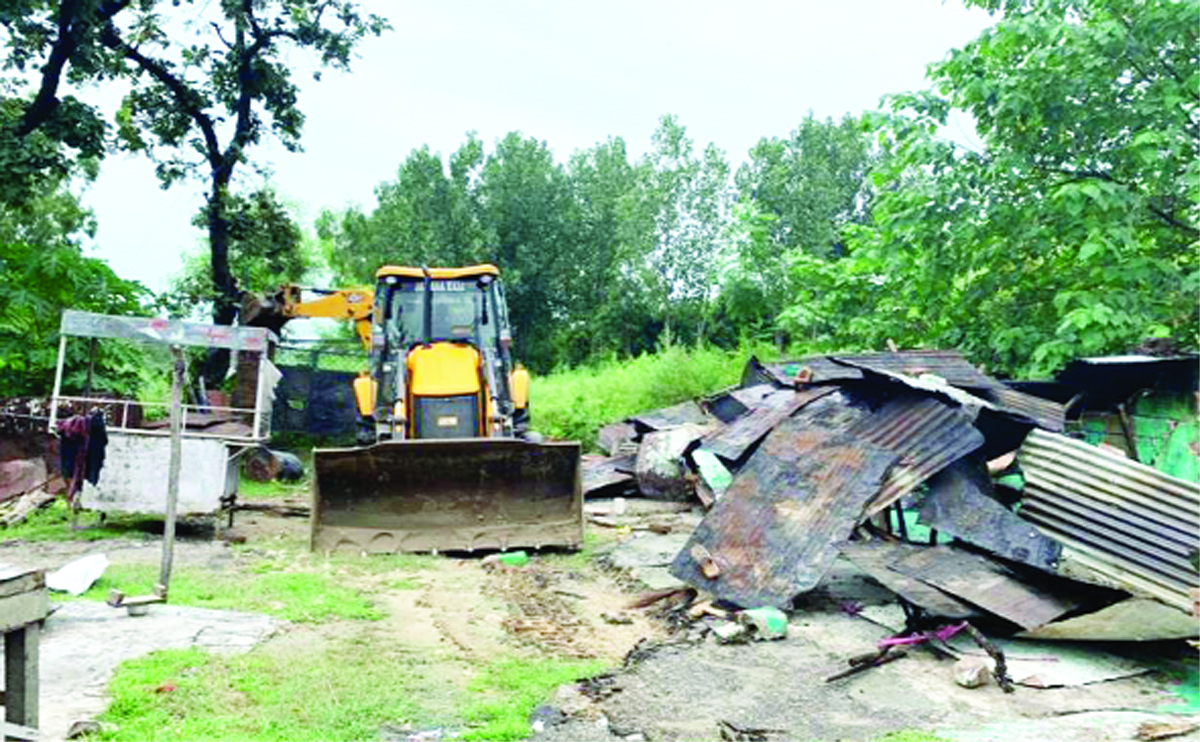Romesh K Pandita
It was in 1988 when National Forest Policy of India was formulated to maintain 33 percent of the countries geographical area under forest or tree cover against the world average of 26.60 percent. The Ministry of Forest and Environment had launched several legislations and programs throughout the country to arrest the depletion in forest cover besides taking initiatives to increase the forest cover.
Forests are considered to be very important in maintaining environmental stability and the ecological balance of environment in respect of cleaning of air, water, soil moisture and checking of erosion. Forest help in balancing the eco-system can play a critical role in checking global warming, environmental stability and climate change.
The total forest and tree cover as per India State of Forest Report, 2017 was 802088 square kilometer which is 24.39% of total geographical area of India. Forest cover is classified in Dense Forest, Moderate Dense Forest, and open Forests. India has rich forests types like Tropical Wet Evergreen Forests, Tropical Moist Deciduous Forests, Tropical Dry Deciduous, Sub Tropical Dry Evergreen, Himalayan Most Temperate Forest, Sub-Alpine and Alpine Scrub Forests etc.
India has developed a strong legal and policy framework for Forestry sector for sustainable forest governance through National Forest Policy, 1988, Indian Forest Act, 1927, Forest (Conservation) Act, 1980 and Wildlife (Protection) Act, 1972. National Forest Policy, 1988 sets a strategy of forest conservation with principal aim of ensuring environmental stability and maintenance of ecological balance by bringing a minimum of one-third of total land area of the country under forest or tree cover.
The forest cover of a country plays a unique role in maintaining of ecological balance, environmental stability and sustainable development. The Judicious management of natural recourses, flora and fauna attribute to the growth in economical development of a country. However, the ever increasing demand due to increasing population has resulted in pressure on the forests which at one point of time looked inexhaustible. These forests, flora and fauna are struggling for survival and therefore, scientific management for conservation of these natural resources is required to be further strengthened.
The forests are considered to be green lungs of planet earth. They provide various ecological services like cleaning of air, maintaining of soil moisture, checking soil erosion, maintaining environmental stability and ecological balance. Forest cover on earth provide vital organic infrastructure for densest, most diverse collections of life, support countless species, including our own. We tend to take forests for granted, undermining how indispensible they are on the planet earth.
Forest pump out oxygen we need to live and absorb carbon dioxide we exhale. Humans now clear millions of acres from natural forests every year especially in the tropics, letting deforestation threaten some of the most valuable ecology.
More than 1.6 billion people rely on forests to some extent for their livelihoods, according to the U.N., and 10 million are directly employed in forest management or conservation. Forests contribute about 1% of the global gross domestic product through timber production and non-timber products, the latter of which alone support up to 80% of the population in many developing countries.
Natural beauty may be the most obvious and yet least tangible benefit that a forest offers. The abstract blend of shade, greenery, activity and tranquility can yield concrete advantages for people. They give us a sense of mystery and wonder, evoking the kinds of wild frontiers that moulded our distant ancestors grow forests for future generations.
With the focused attention and the hard efforts of the Department of Forests, real treasure for mankind and living species on the planet earth. People especially the Government must be dedicated to preserve this treasure and maintain its pristine glory.
Forest Land in the Erstwhile state of Jammu & Kashmir;
The forest area of both union territories of Jammu & Kashmir and Ladakh is 20,230 Square kilometers and the total geographical area is 101387 square kilometers. The region wise Geographical area and forest area of Kashmir, Jammu and Ladakh is 15948, 26293, 59146 square kilometers and 8182, 12066, 36 square Kilometers respectively. The percentage of forest area with respect to geographical area of the three regions is 50.97,45.87 and 0.06.
It is a matter of rejoice that the biennial report “India State of Forest Report (ISFR)” released by Ministry of Forest and Environment, in New Delhi on 30th December 2019, has announced that the forest cover in the country has increased by 3,976 square Kilometers (sq km). The erstwhile state of Jammu & Kashmir managed to be one among the top five States/UTs that registered maximum increase in forest cover. The Forest cover in Jammu and Kashmir has also increased by 371 sq km including 348 sq km in UT of J&K and 23 sq km in Ladakh UT and as per the ISFR-2019. The area under very dense forest category has also grown this time, the report revealed.
However, the real concern regarding encroachment of huge chunks of forest land by several ex-ministers, civil and police administration and other influential people along the length and breadth of Union Territory of J&K over past several years particularly the period of upraise of militancy has not been addressed. During the period of militancy particularly from 1990 to 1996 numberless forests were subjected to virtual loot resulting in felling of large number of forest trees. The real culprits responsible for vandalizing of green forest cover during past several years since the eruption of militancy are required to be identified and brought to book; besides retrieving of huge chunks of forestland across the length and breadth of union territory of J&K from the unauthorized occupation of these elements.
feedbackexcelsior@gmail.com
Trending Now
E-Paper


